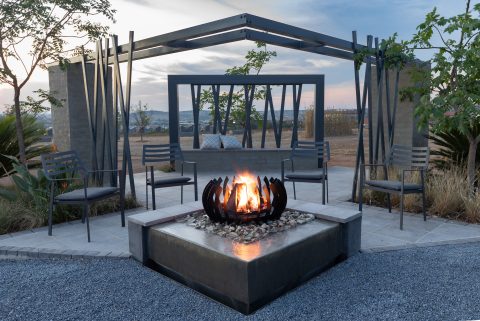Arch SA
Top Honours For Ntsika Architects
The prestigious World Architecture Master Prize honours designs in the disciplines of architecture, interior design, and landscape architecture with the aim of advancing the appreciation of architecture worldwide. Previous winners of the award include Aedas, Shop Architects, Zaha Hadid Architects and Skidmore, Owings and Merrill (SOM).
The winning design – conceptualised by Nadia Tromp of Ntsika Architects – for the Westbury Transformation Development Centre ensured the incorporation of local skills and innovative use of materials to create a building that has quickly become a landmark in this derelict part of Johannesburg.
The award builds on the World Architecture Festival (WAF) win for Ntsika in 2017, when Tromp became the first female architect from Africa to take home the top honours from these awards. Furthermore, Ntsika has gone on to win the Gauteng Institute for Architecture (GiFA) Award in 2017, the South African Institute of Architects (SAIA) Award 2018 and the German Design Prize in 2019 for various works.
Ntsika Architects is the only African architectural practice to receive an award at the World Architecture Master Prize 2019.
“I am honoured to receive this recognition for a project that is deeply meaningful to myself and my team. It was humbling for our project to be chosen from among hundreds of inspiring projects submitted. And, it was an unforgettable experience to receive the award in the iconic Guggenheim Museum, Bilbao,” said Tromp. “For Ntsika Architects to be named as a finalist for the Practice of the Year Award has also been a huge honour for us. We believe strongly in the work that we do and the power of architecture in society.”
The 2018/2019 year has been a whirlwind year for Tromp who is a past president of the Gauteng Institute for Architecture (GIfA) and also serves as the director of the International Union of Architects (UIA), Community Architecture & Human Rights work program (CA+HR).
Ntsika Architects was also named for another award at the AMP in 2019. The company was among four finalists selected for the Multi-disciplinary Architecture Practice of the Year Award.
The award-winning project
The Westbury Transformation Development Centre (WTDC) is a mixed-use public building. The project focuses on developing an approach to engage with communities in a meaningful and sustainable way. It seeks to create an innovative, hybrid architecture from a local palette of materials using local skills.
The site skirts the edge of this marginalised community, separated from other communities by major arterial routes. Located at the gateway to Westbury, it offers a unique opportunity to shift perceptions of the public and the community regarding its worth. It alters the urban landscape and offers the prospect for spatial and social justice. It is becoming somewhat of a landmark; creating a sense of pride among the previously invisible community, often made visible only through news reports of gang shootings or associated social violence.
A complex project brief, with multiple end-user stakeholders, led to a surprising design response. The project is centred around creating smaller safe spaces within a larger programme. The site is a long narrow sliver of land.
The only existing building that remained, is the old St. Barnabas School building, 1935. Although the building has no architectural heritage value, it is an important part of the community’s collective memory of the space and has great cultural significance to the people. This building becomes the anchoring point of the site, around which the rest of the design has been hinged. It has been repurposed as the preschool classrooms for the Early Development Centre (ECD), with the entrance located between the old and new structures, wrapping a defensive courtyard against the busy corner of Perth Rd and Harmony St.
The building envelops, restricted by a limited buildable area, holding the corner and then steps far back off the main street edge. This creates a generous public space in front of the building that can be used by the community for various social activities.
The long-built form is oriented along the north-south axis of the site, allowing the narrow floor plates to get maximum natural daylight deep into each floor. The western and eastern facades are intentionally short, with minimal sun shading required. All services are located along the southern facade.
An integrated green approach has been taken towards the shading of the building. The northern facade has deep horizontal fins with a large concrete overhang on the first and second floors. A screen on the second floor is planted with indigenous creepers that flower during summer, creating natural shade, and lose leaves in winter, letting in the winter sun. This living screen along the prominent facade of the building becomes an integral passive heating and cooling device, while colour and texture differentiate each segment and create a link between the external public-facing form and the internal programme of each portion.






 Sign-up and receive the Business Media MAGS newsletter OR SA Mining newsletter straight to your inbox.
Sign-up and receive the Business Media MAGS newsletter OR SA Mining newsletter straight to your inbox.